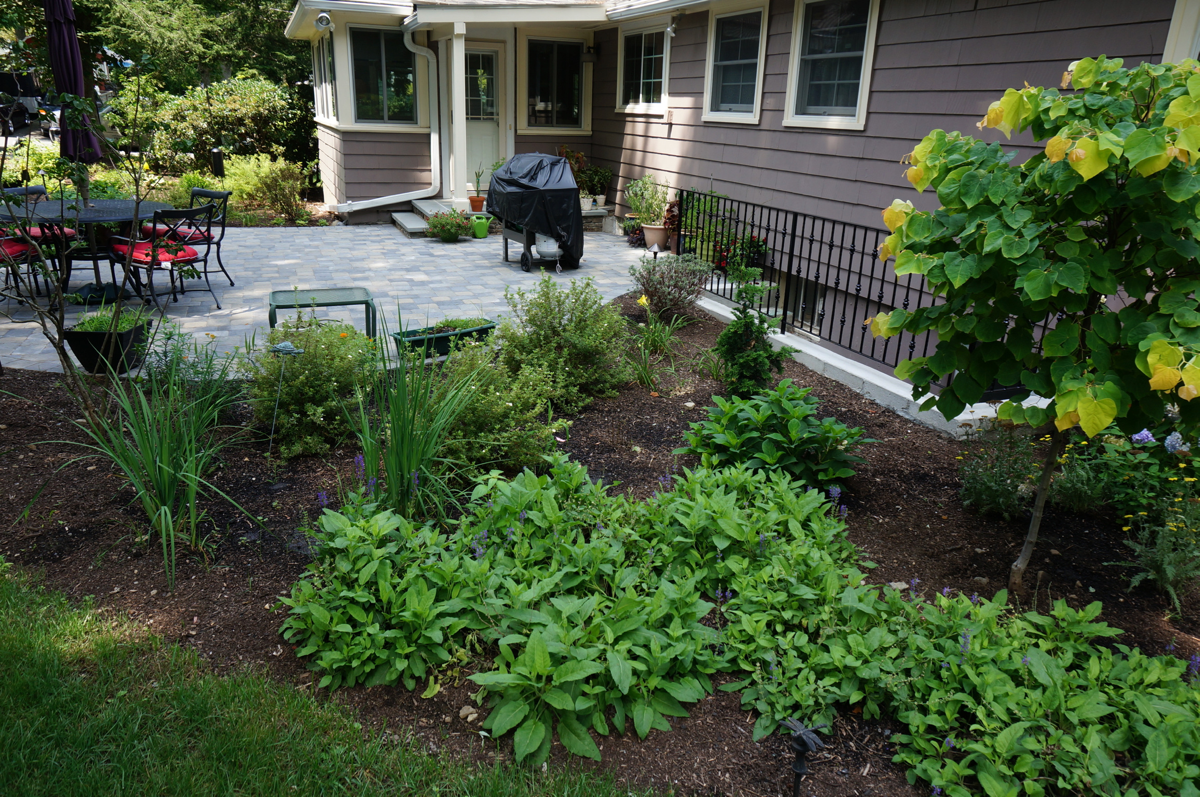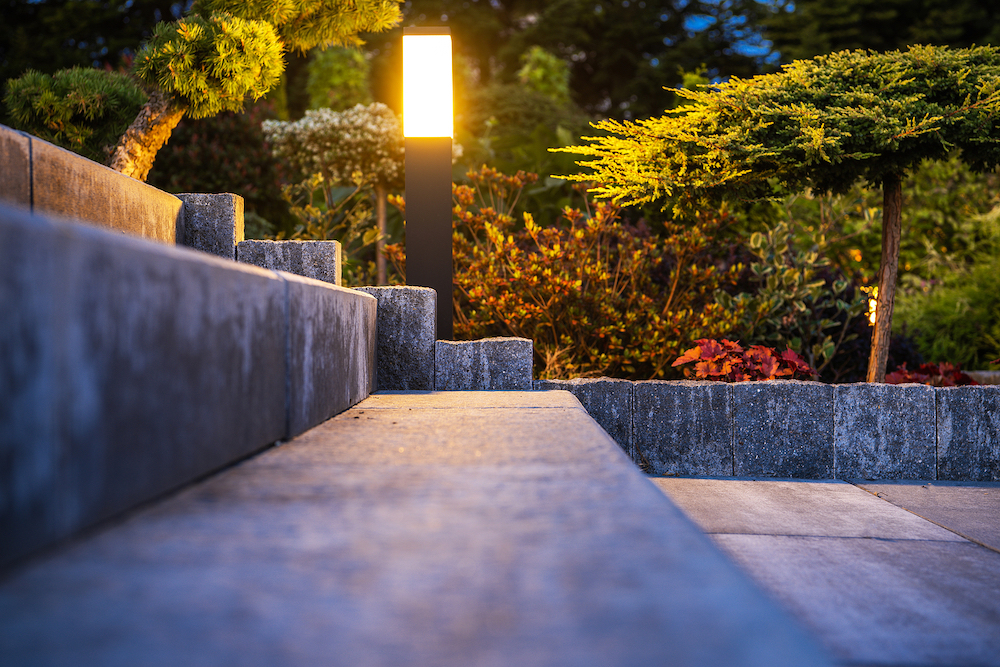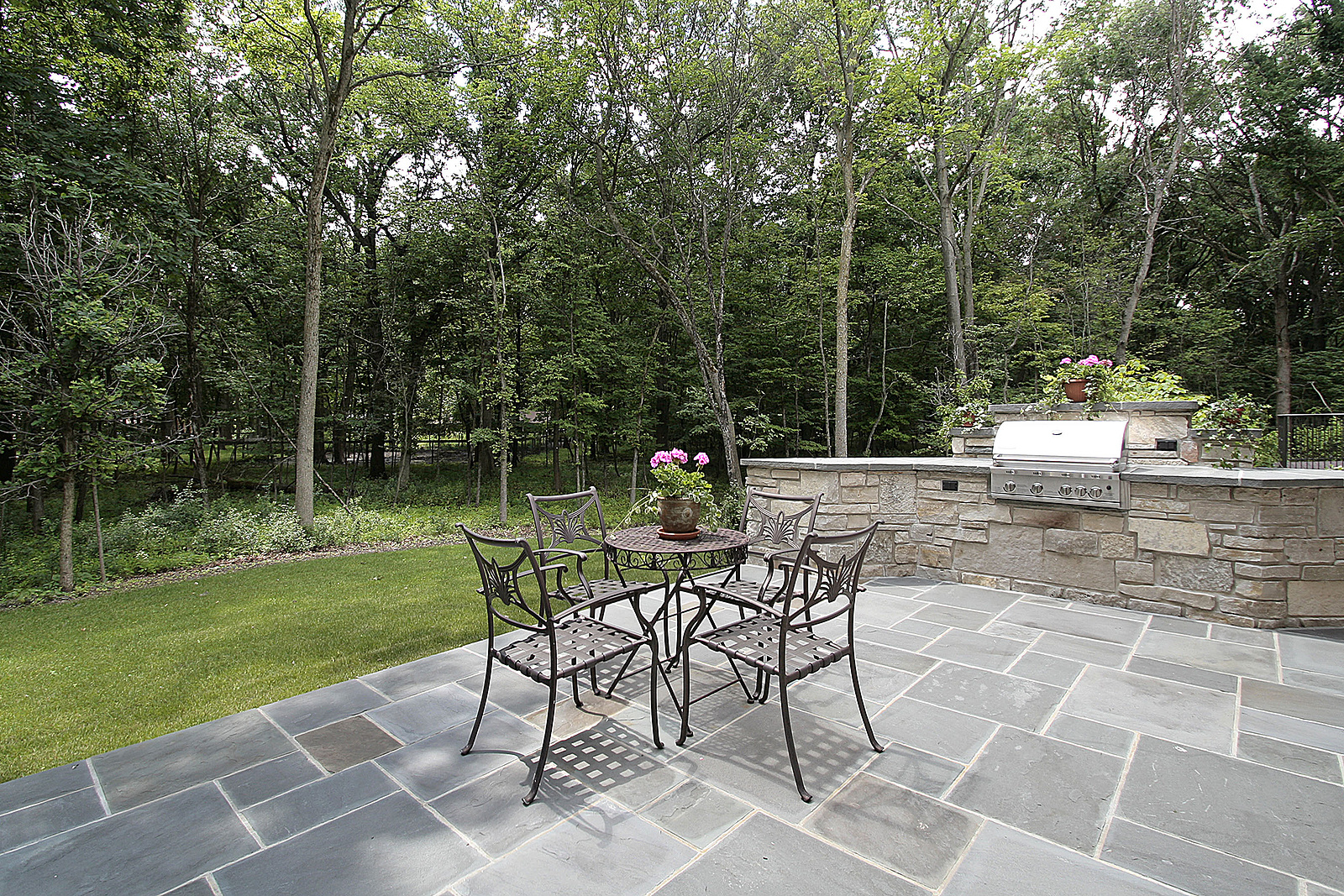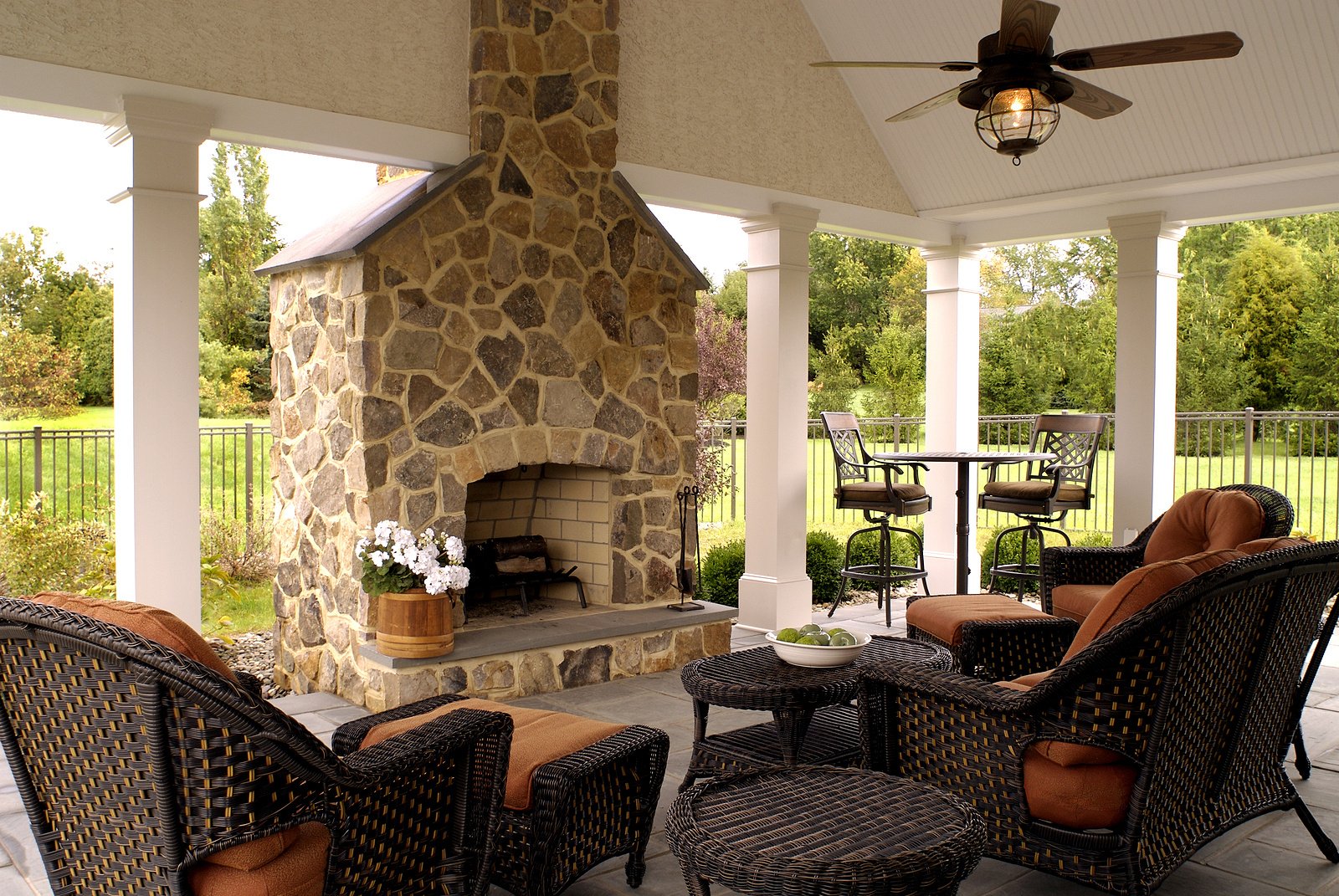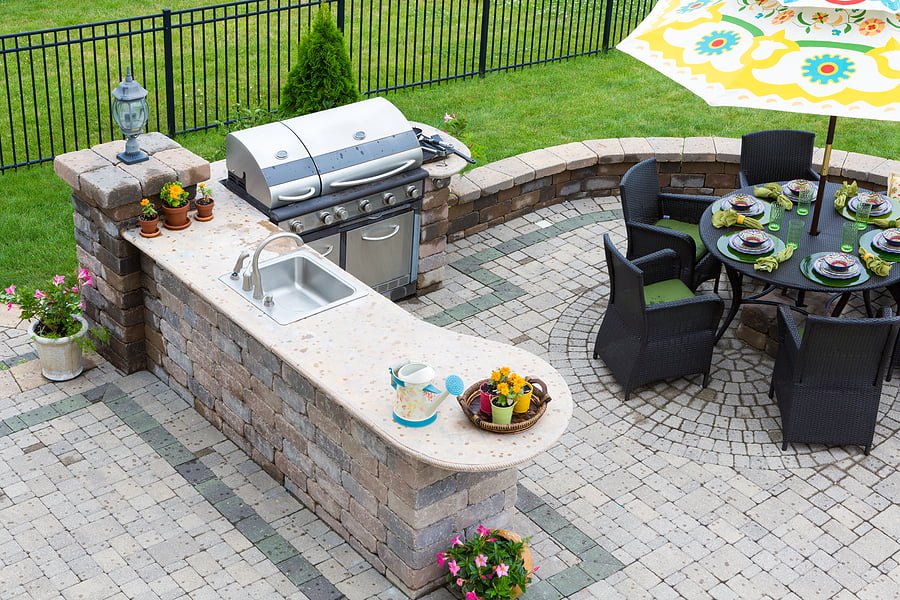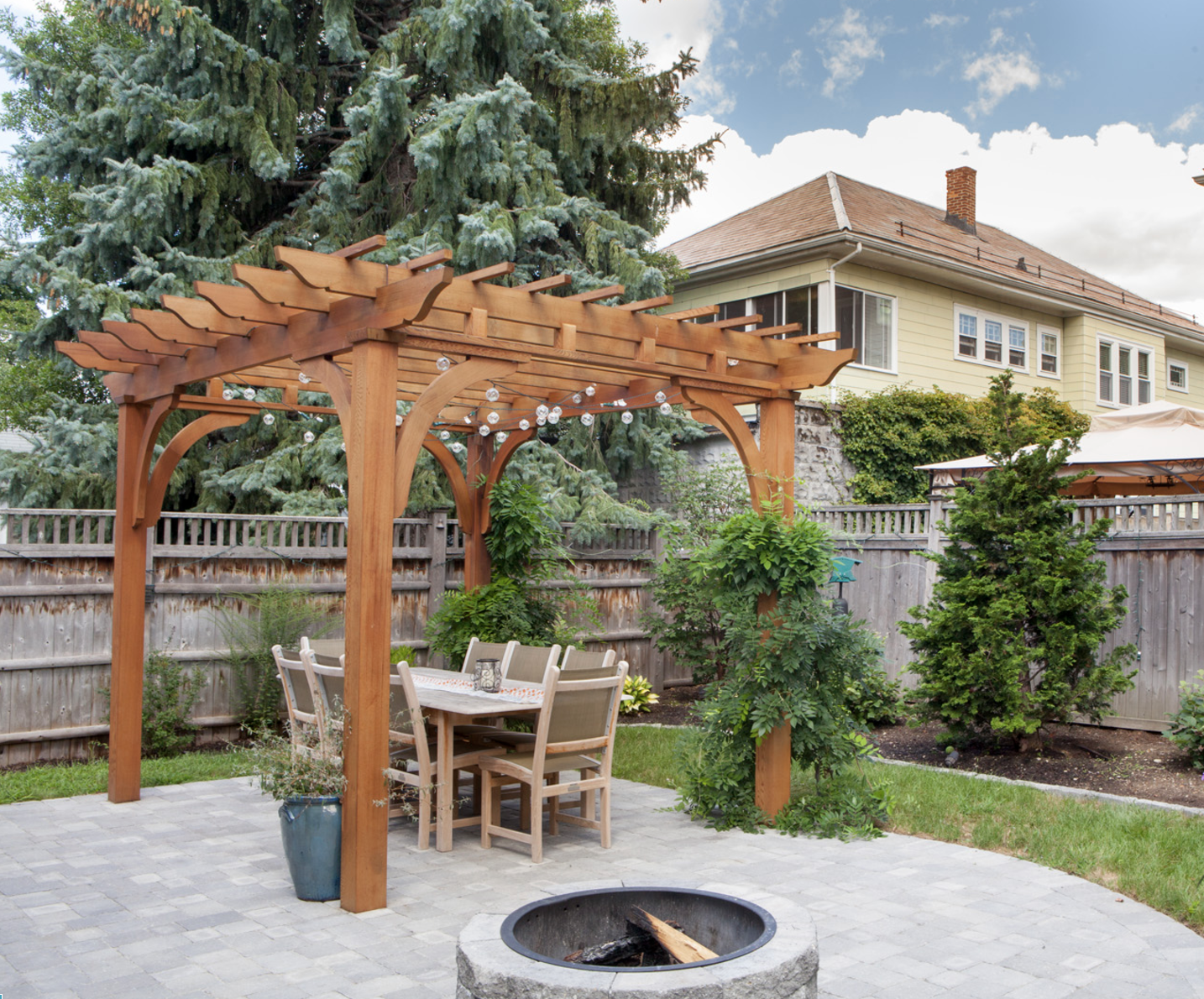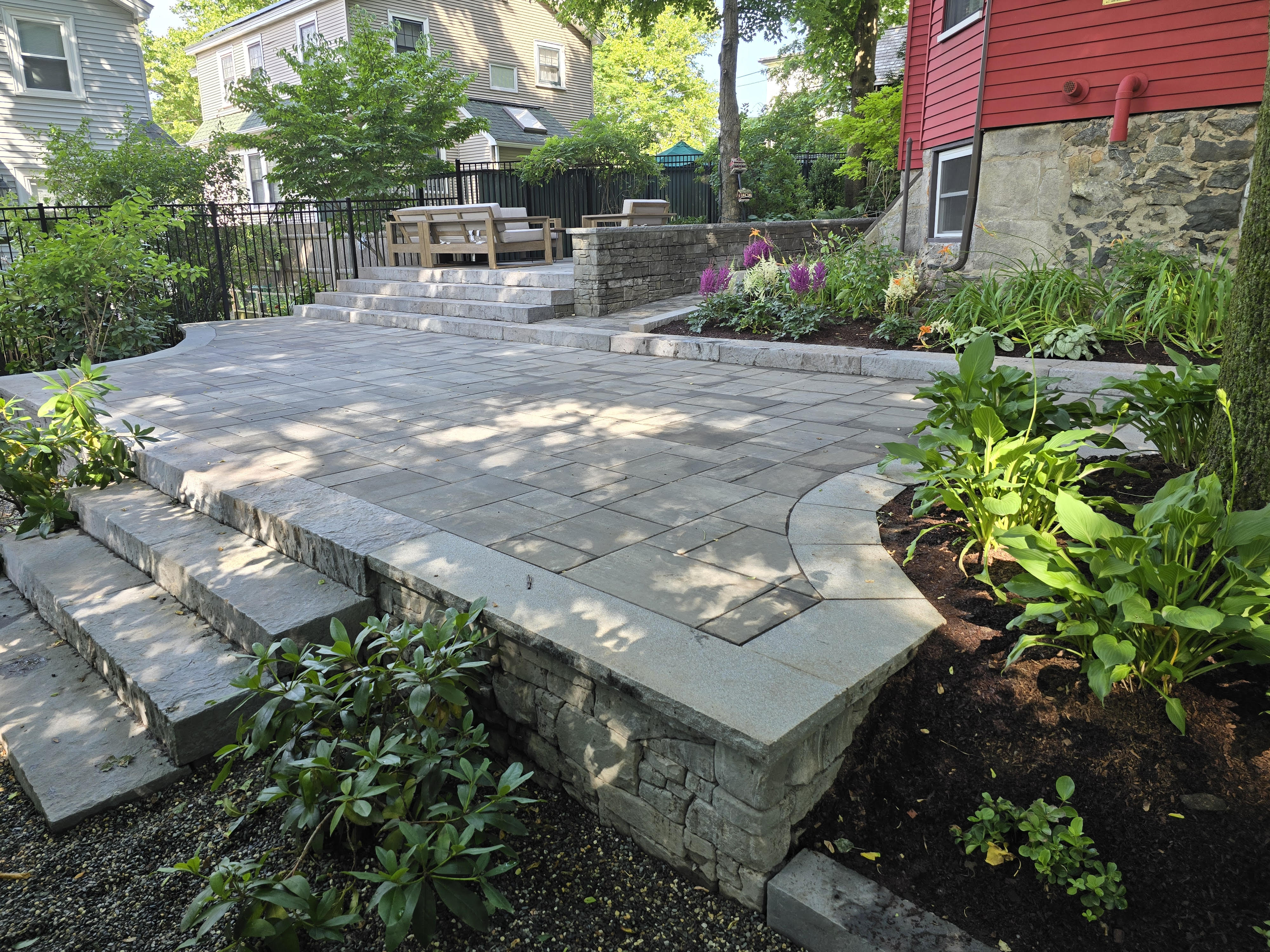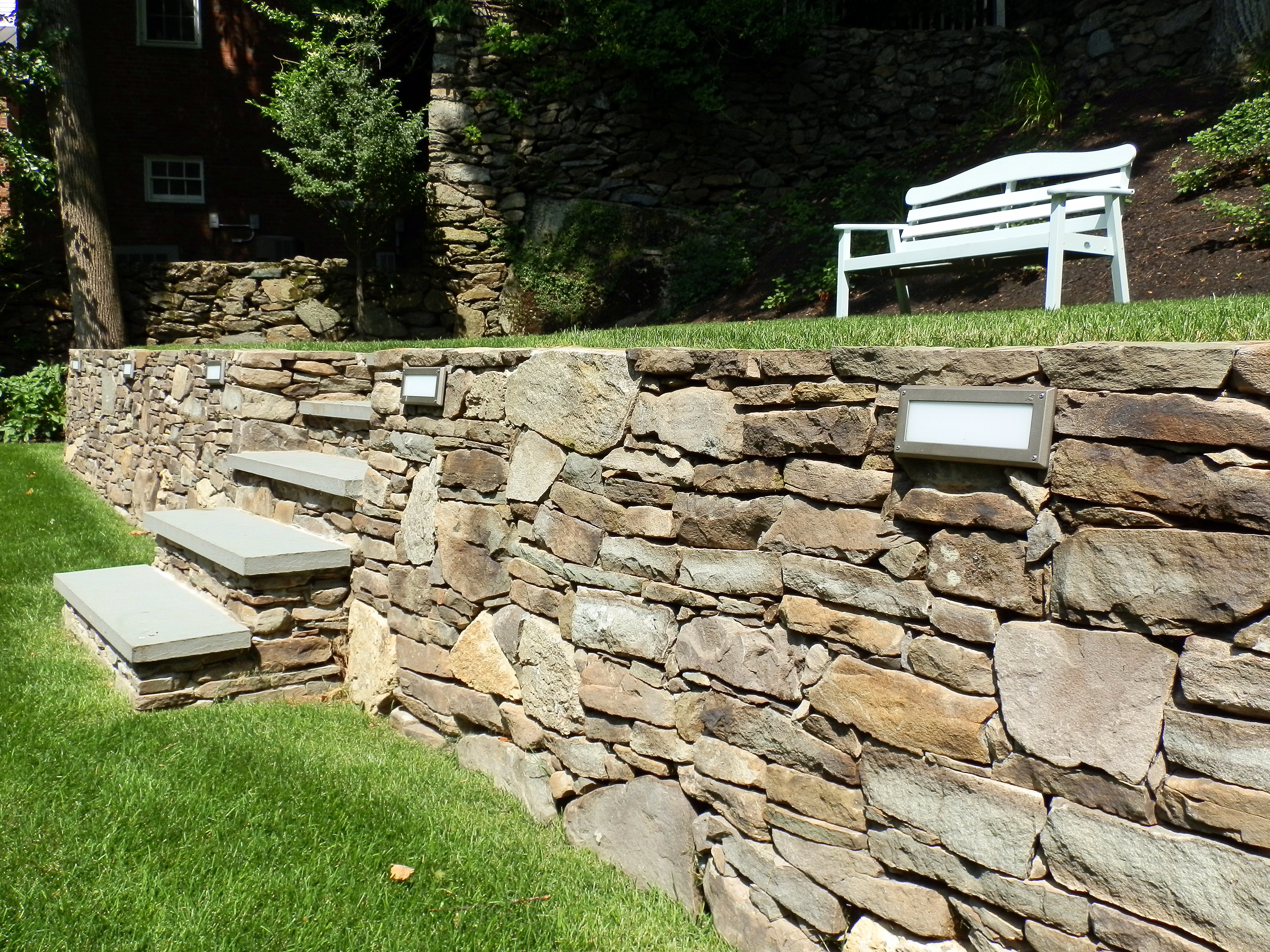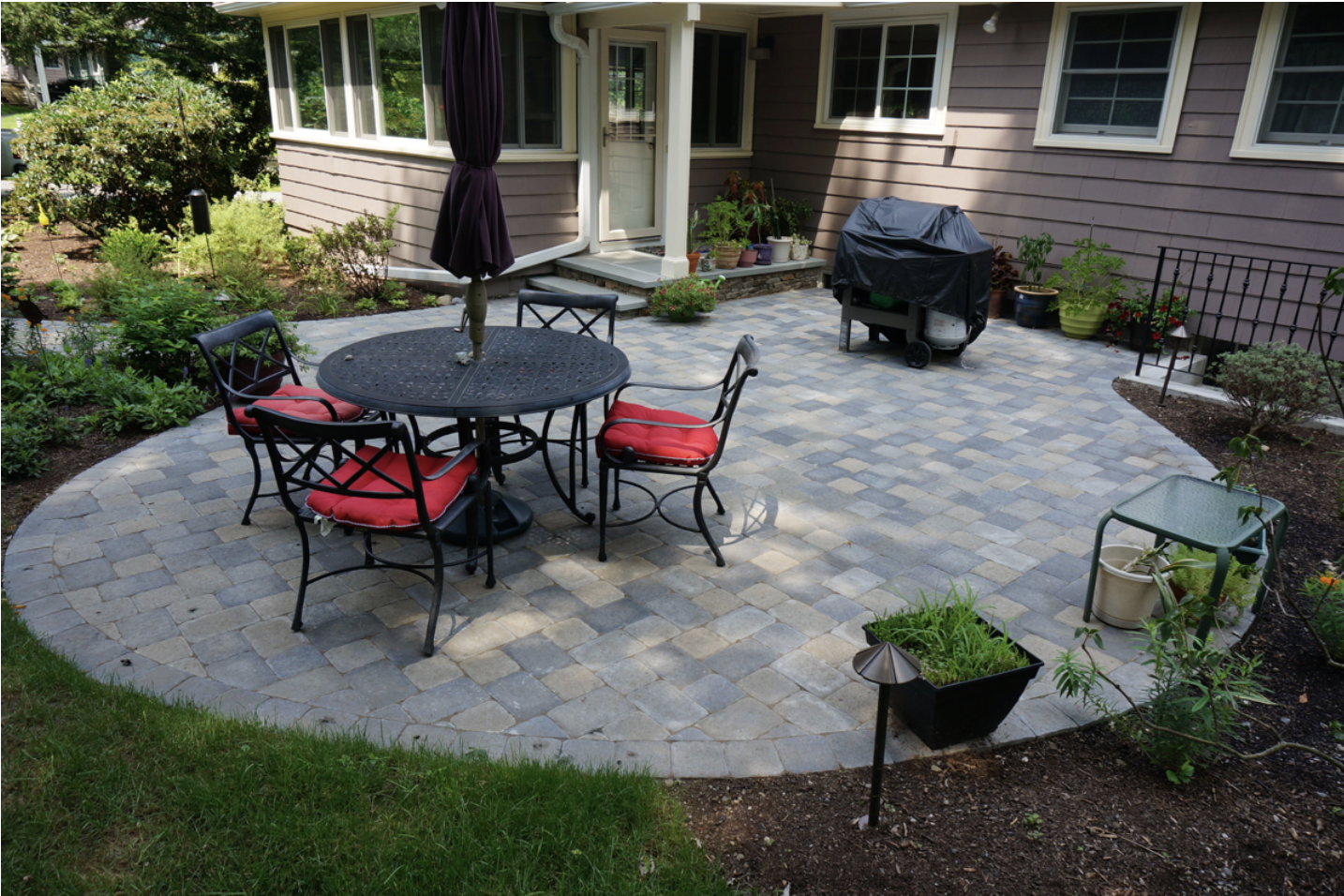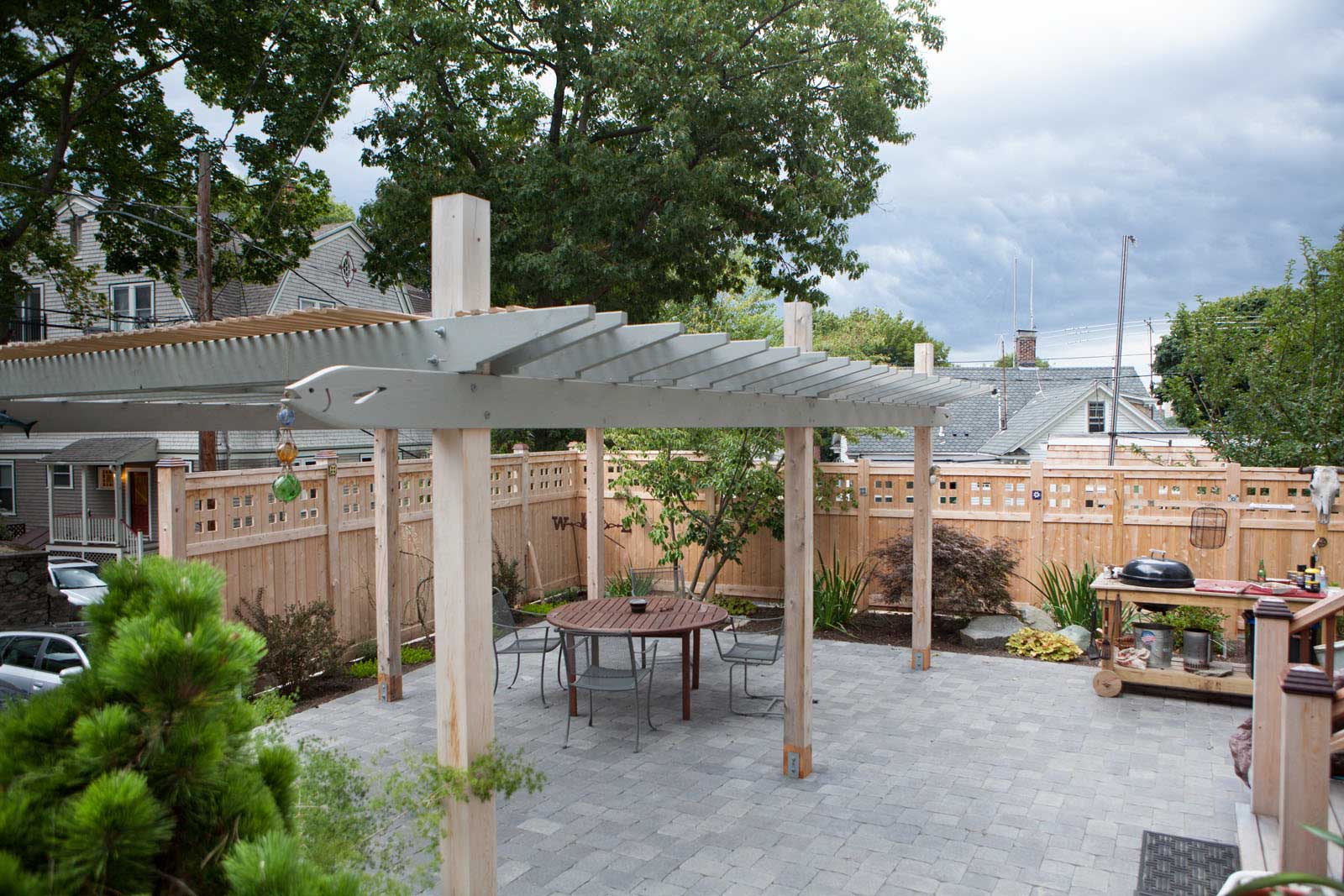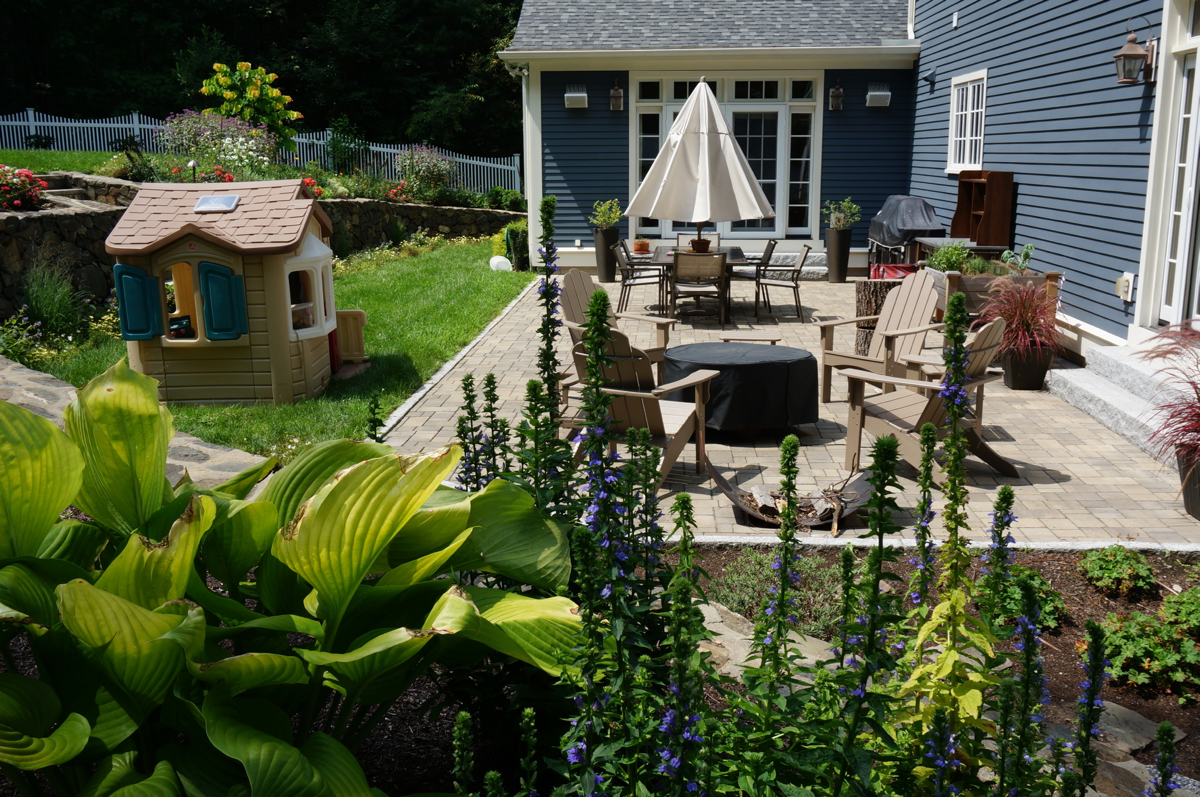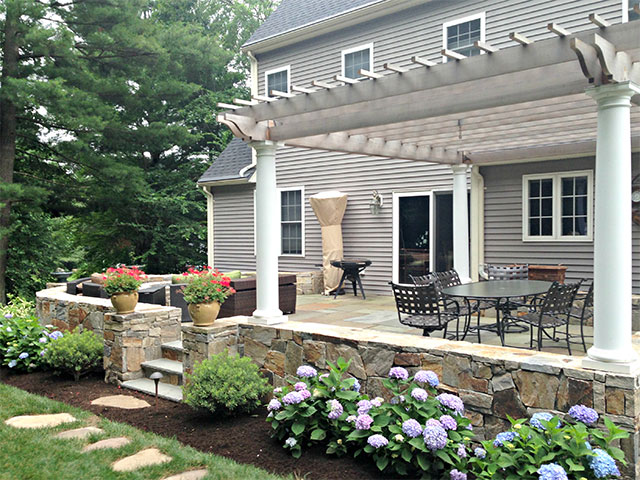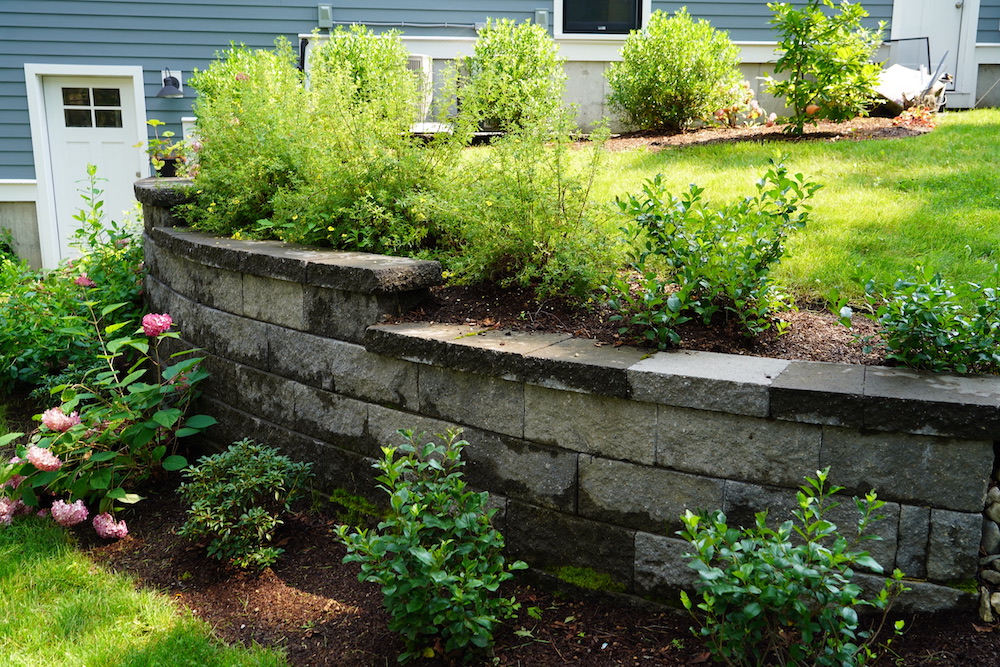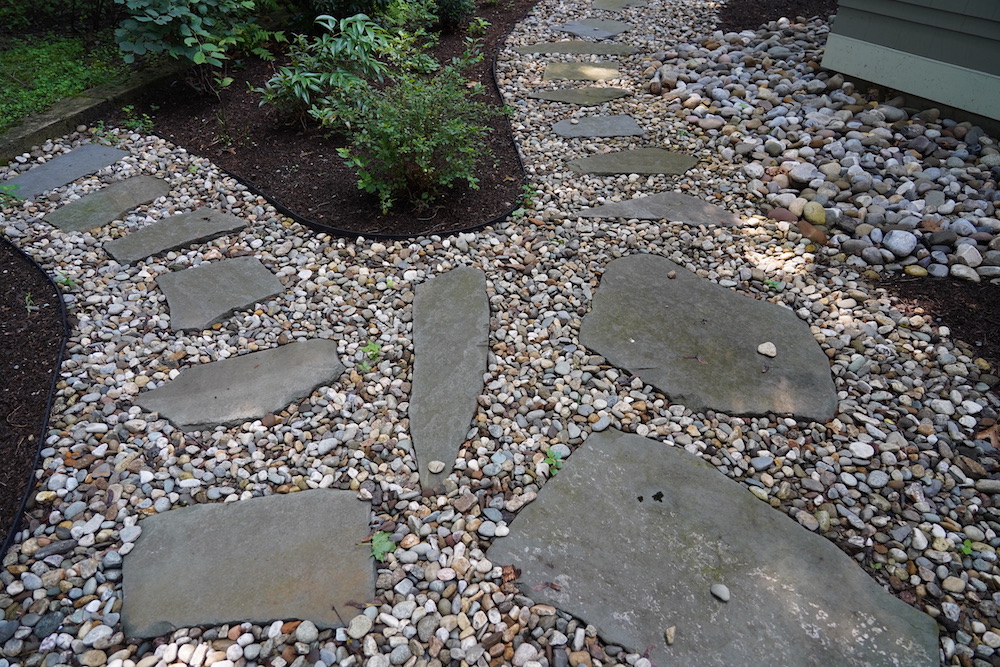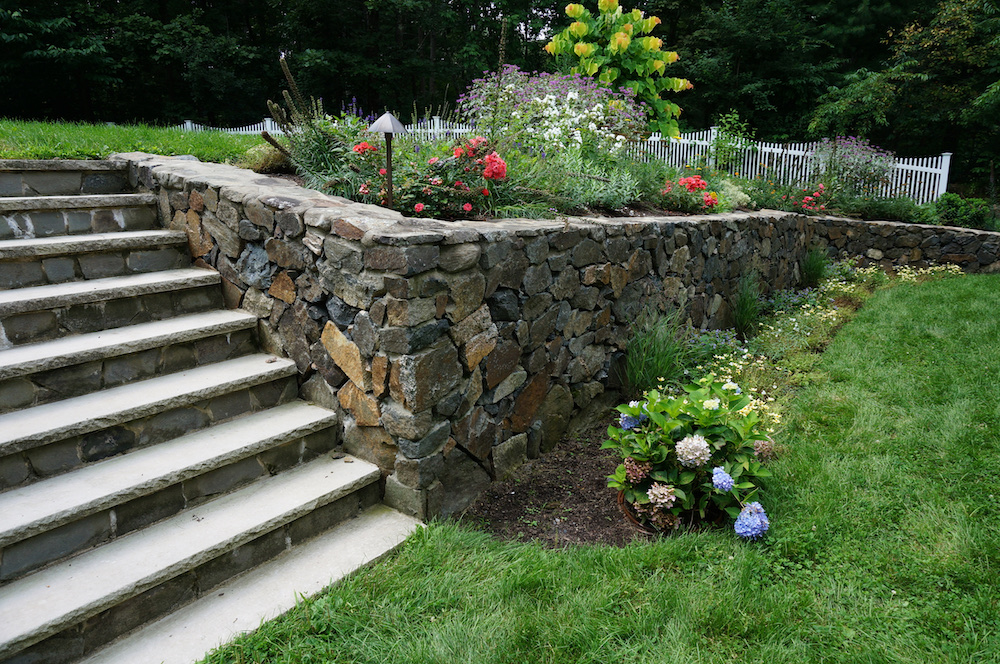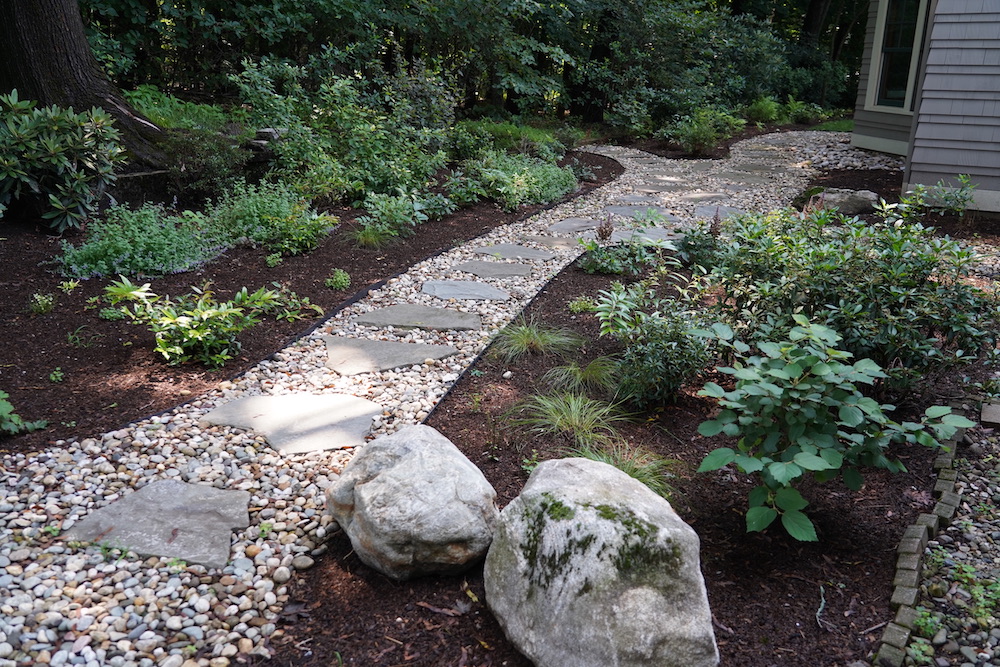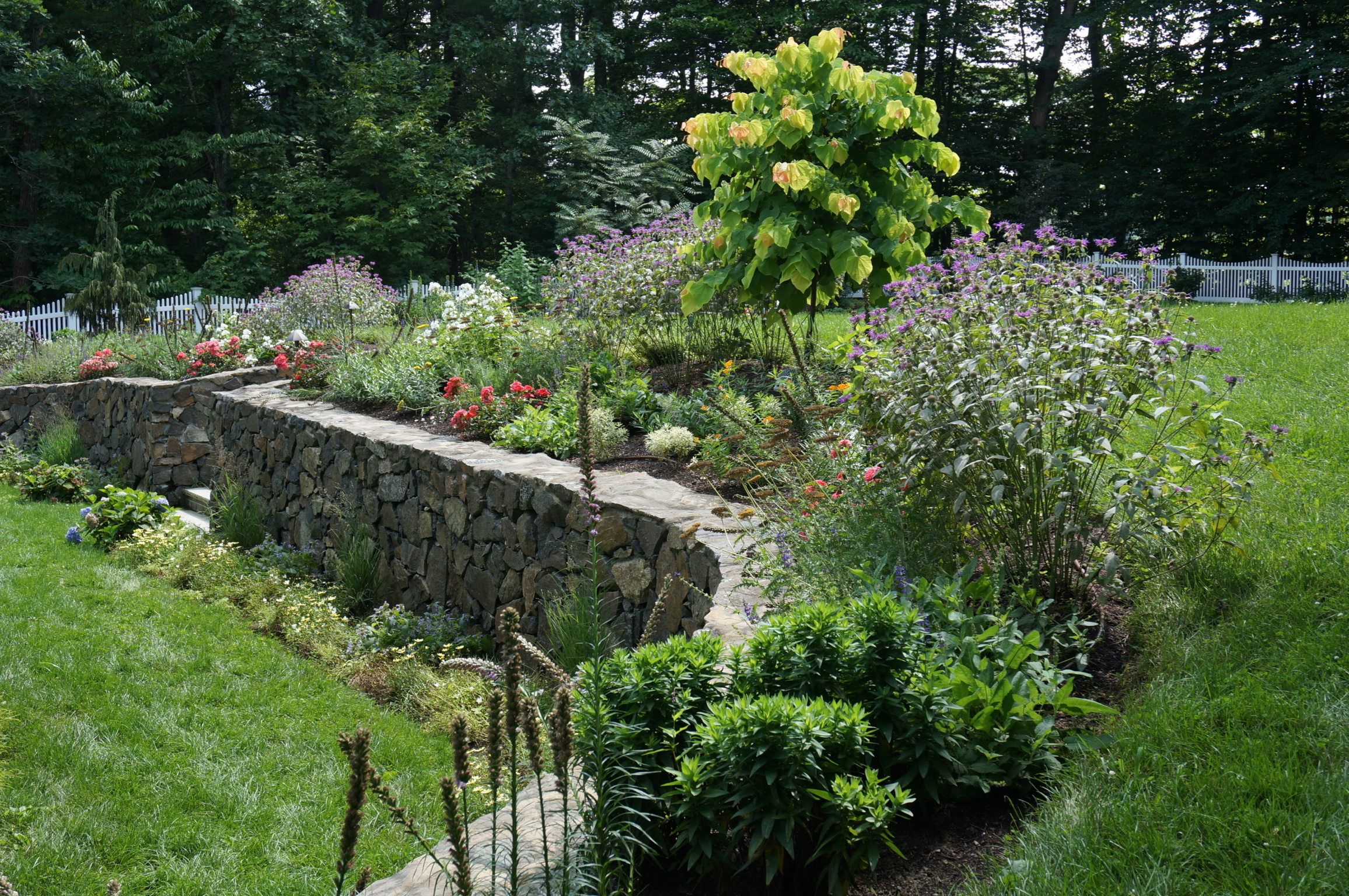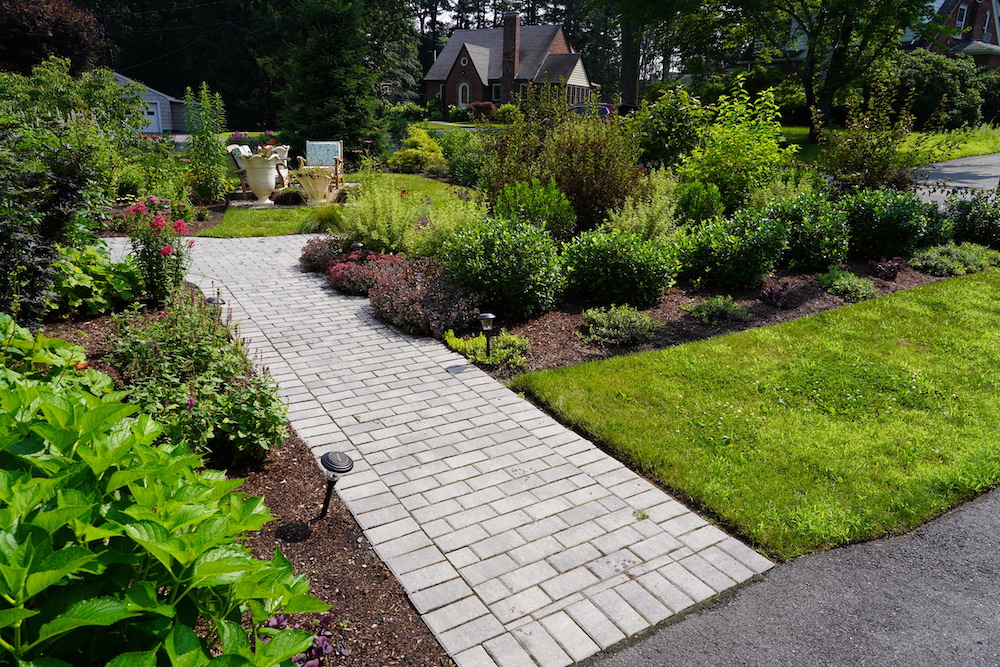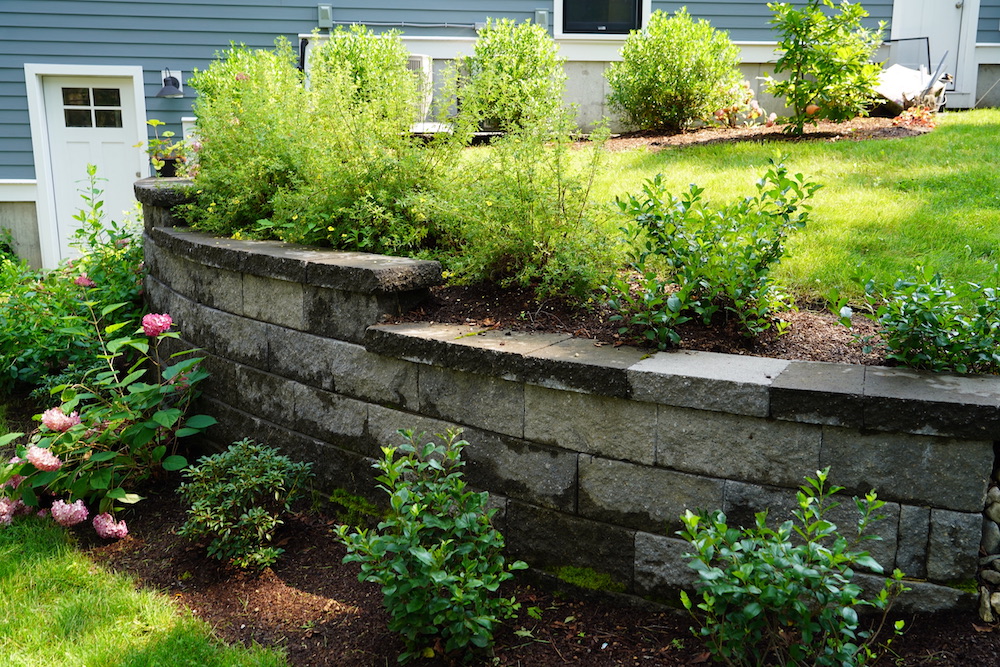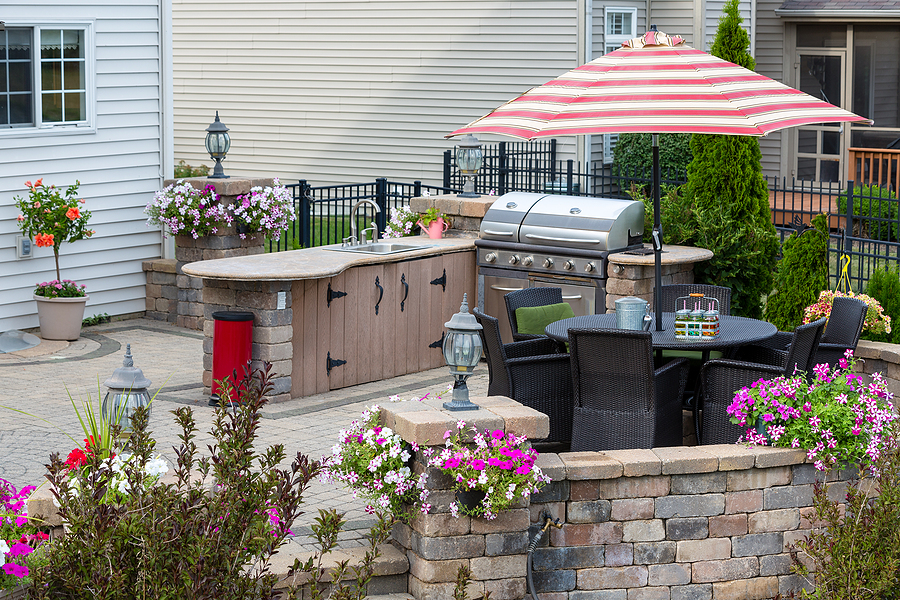Hardscapes aren’t just about laying down a patio or a simple path. When thoughtfully designed, they can manage water more efficiently, cut down on runoff and give your yard a refined look that lasts through the seasons.
The foundation of a great outdoor space is planning with eco-friendly hardscaping in mind — selecting materials and layouts that are tough enough for New England weather, easy to maintain and smart about their environmental impact. With the right plan, you don’t just end up with a landscape design that looks good — you create one that works with nature instead of against it.
Why Sustainability Matters When Building a Hardscape
A hardscape isn’t just a set of surfaces; it’s part of an ecosystem. Every choice you make — from grading to material to placement — affects how your soil, plants and water cycle interact. That’s why the design stage is critical.
Take a patio, for example. It may be the centerpiece of your outdoor living area, but if it’s not graded properly, stormwater will spill across your property instead of filtering into the ground.
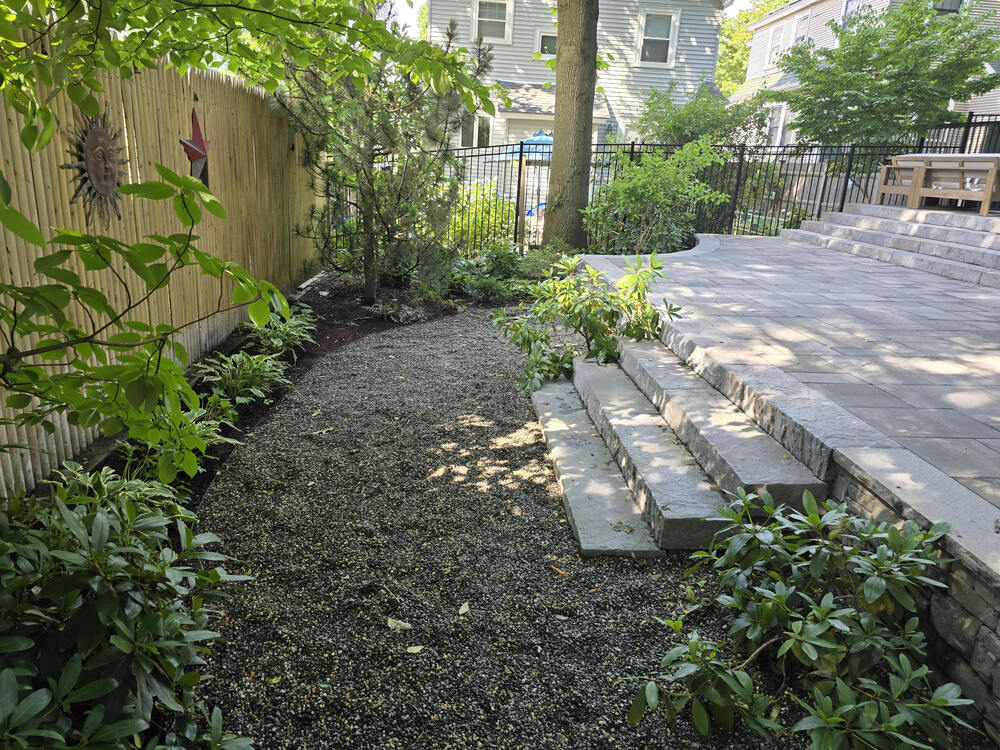
Walkways can do more than link one space to another — they can guide water into areas where it soaks back into the soil, or direct it to plantings that thrive on extra moisture.
Even retaining walls can take on multiple roles. Beyond their structural purpose, well-engineered walls can slow erosion, redirect stormwater where it’s useful and double as built-in planting beds. When you view every element as part of a larger system, your yard becomes not just more attractive, but also more resilient.
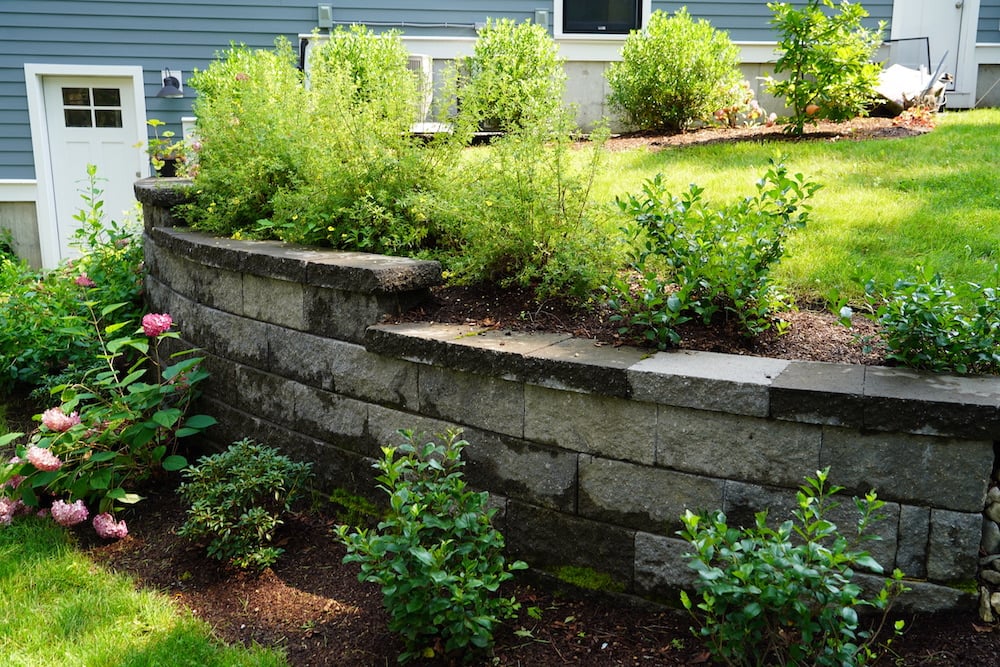
Strategies to Design a Sustainable Hardscape
Choose the Right Hardscape Materials
The materials you choose determine how your hardscape looks, how long it lasts and how well it handles the challenges of water. Here are options that combine performance with environmental benefits:
Permeable Pavers
These mimic the look of traditional pavers but allow water to pass through joints or porous surfaces into the soil below. They cut down on runoff, help filter pollutants and prevent puddles, making them ideal for patios, walkways and driveways.
Natural Stone
Flagstone, bluestone and granite are timeless for a reason. They resist weather, wear beautifully over time and, when installed with open joints, allow water to filter through rather than rushing off the surface.
Gravel and Loose Stone
Gravel paths and crushed stone zones handle runoff naturally. They reduce pressure on drainage systems and give groundwater a chance to recharge, all while providing a clean, textured look.
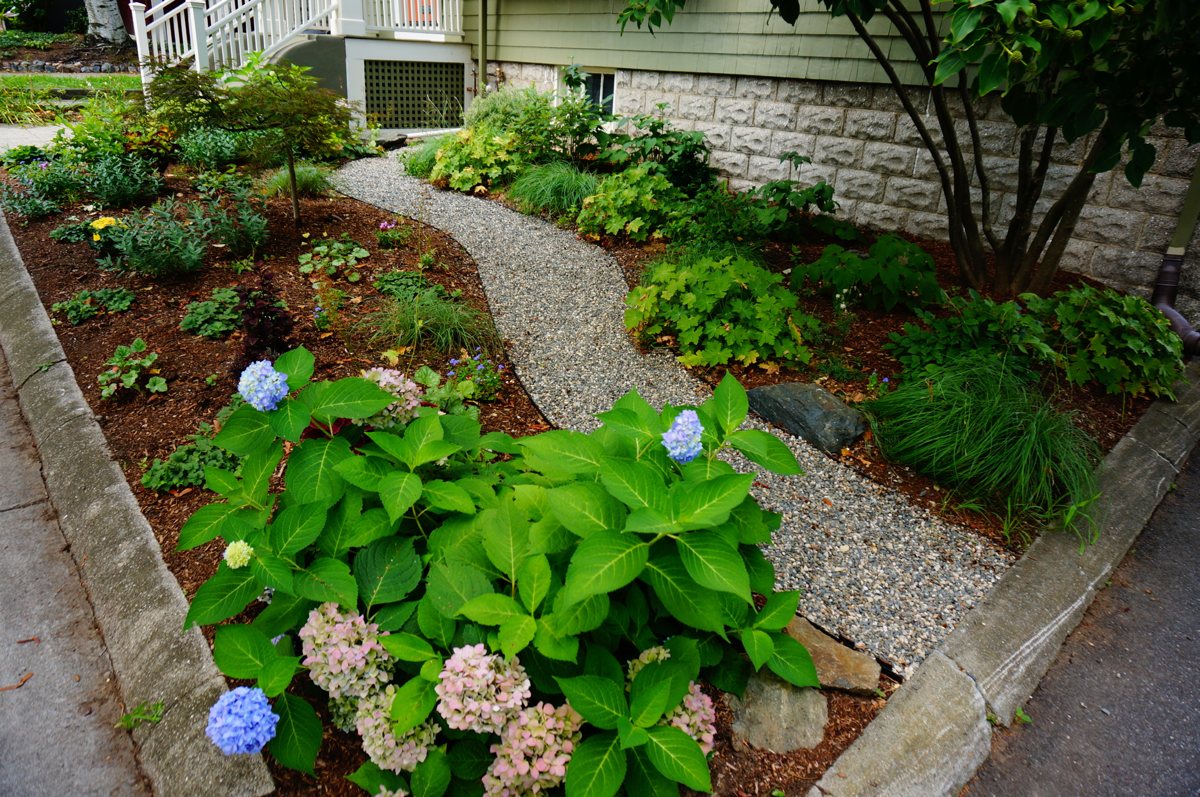
Composite Pavers
Blends of stone and recycled material make these durable and weather resistant. Many are engineered with permeable surfaces, combining strength with smart water management.
Recycled Aggregates
Crushed concrete or reclaimed brick provide solid bases or decorative finishes. They’re sturdy, versatile and cost-effective, particularly for patios and walkways that need strong underlayers.
Each of these materials offers benefits on its own, but they truly shine when combined into a design that supports water flow and soil health across the whole landscape.
Plan Water Management as a Design Feature
Rain and snowmelt are facts of life in Massachusetts, and without the right hardscape design, that water can turn into runoff that erodes soil and sends pollutants into storm drains. An eco-friendly hardscape makes water management a priority from the start.
Permeable paving is one solution, but it becomes more effective when paired with intentional grading. A patio tilted slightly toward a planting bed turns stormwater into irrigation.
Retaining walls built with drainage channels or weep holes release water gradually instead of trapping it. Even something as simple as running a walkway beside a rain garden can transform excess runoff into a natural resource.
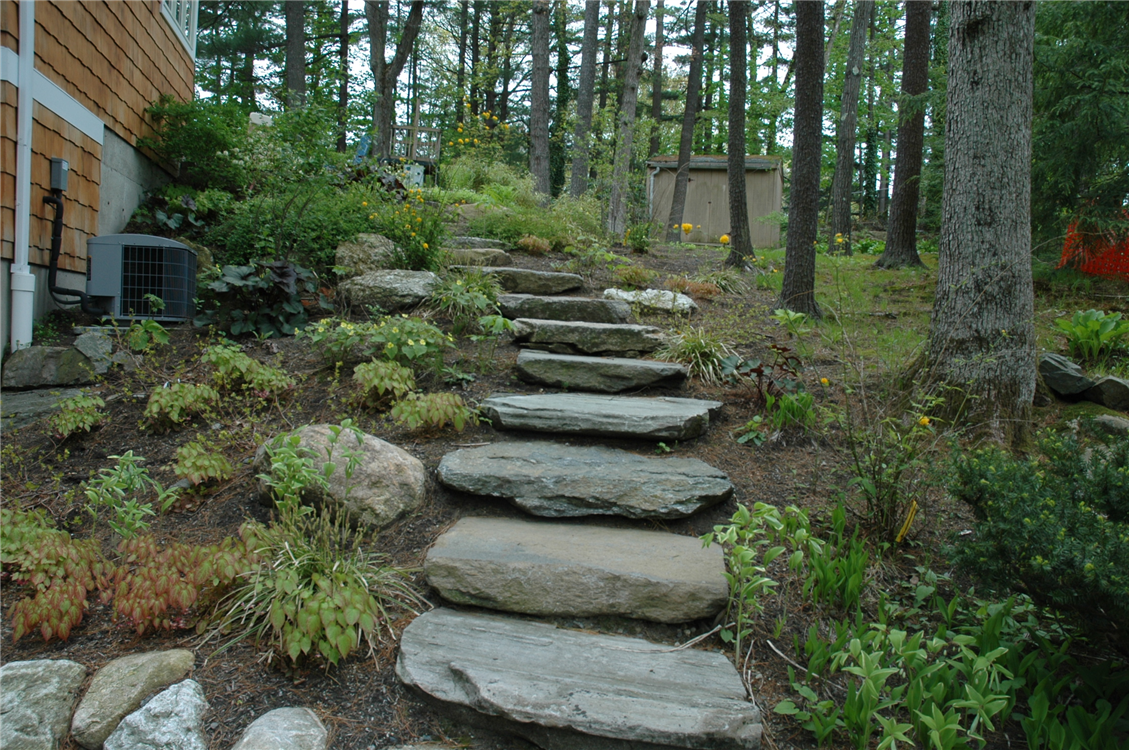
The aim is always the same: slow water down, filter it through soil and plants and return it to the ground where it supports the water table. This creates a yard that is not only environmentally responsible but also more comfortable to use — drier, cleaner and longer lasting.
Blend Plants and Hardscape
Hardscape alone can feel stark. But when paired with plants, it becomes part of a vibrant, living yard. The combination also strengthens your sustainable design.
Low-maintenance native plants thrive in local conditions with little extra care. Around patios and walkways, they add color, texture and seasonal interest while supporting pollinators and other wildlife.

Along retaining walls, grasses and perennials can anchor soil and soften stonework. Even modest borders of wildflowers beside gravel paths act as filters for runoff and create habitats for beneficial insects.
When plants and hardscape are designed together, the result is a yard that feels natural and welcoming, with each element reinforcing the other.
A yard built with eco-friendly hardscaping in mind doesn’t just look polished — it functions better, too. With these strategies, patios drain efficiently, walkways stay sturdy, retaining walls prevent erosion and native plants create a thriving ecosystem.
Instead of managing problems like standing water or constant upkeep, you get outdoor spaces that deliver long-term beauty and environmental benefits.
Choosing permeable pavers, natural stone, gravel or composite pavers can make a tangible difference for the soil, groundwater and wildlife around it. With a clear plan for water flow and plant integration, you’re not just building a feature — you’re shaping a sustainable outdoor space that works in harmony with its surroundings.
To learn more about designing and building a hardscape for your home, download our free ebook, The Expert Guide to Building the Custom Home Hardscape of Your Dreams. If you're ready to get started on your new hardscape project, or simply want to learn more about the process, you can contact our team here. We'd love to talk to you!


